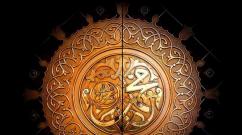Ivan Starov. Architecture is his life
Architect Starov is a famous domestic architect who was engaged in the construction and design of various buildings. He worked on the territory of St. Petersburg and the province of the same name, in Yekaterinoslav and Kherson. All his works are made in the style of classicism. The most famous of them are the Trinity Cathedral in the Alexander Nevsky Lavra, Saint Sophia Cathedral in the Tsarskoye Selo area, the Tauride Palace, the Prince Vladimir Cathedral, the Pellinsky Palace, country palaces on the estates of Sivoritsa and Taitsy, the Nikolskoye-Gagarino estate.
early years
The architect Starov was born in St. Petersburg. He was born in 1745. At the age of 10, he was accepted as a pupil at the gymnasium at Moscow University. A year later, having shown himself well in his studies, he received a transfer to the gymnasium at the St. Petersburg Academy of Sciences.
Initially, the future architect Ivan Starov showed a craving for art. Therefore, after successfully graduating from the gymnasium, he entered the Academy of Arts. His first teachers were the architect Alexander Filippovich Kokorinov and the French professor of architecture Jean-Baptiste-Michel Vallin-Delamote.
Education
Having received a first-class education, the hero of our article went on a trip abroad. As a pensioner of the Academy of Arts from 1762 to 1768 he lived and worked in Paris. Under the pensioner of the Academy of Arts at that time was understood a graduate of the Imperial Academy, who received the corresponding cash benefit. In fact, these were analogues of modern government or commercial grants.
In France, the young man had the opportunity to further improve his skills. In most cases, retirees spent money to go to Italy or France, where there were plenty of opportunities to hone their talent. It is worth noting that only the best students who completed the course with a Big Gold Medal could count on the boarding school. Starting from the 18th century, the pension was paid for three years, later this period was increased to six.
The architect Ivan Starov did just that. In Paris, he studied with one of the largest representatives of French classicism, Charles de Vailly, who had a great influence on him and on the entire Russian architectural tradition. Also, the architect Starov studied in Rome.
Homecoming
Returning to St. Petersburg, the hero of our article first of all set about the project of the gentry cadet corps. For the successful completion of the work in 1769, he was officially recognized as an academician.
After that, he received the position of adjunct professor. Later in 1770 he was promoted to professor.
Among his most ambitious projects, it is worth noting the plan for the formation of the city of Nikolaev at the mouth of the Southern Bug and Ingul rivers in the area of the built shipyard. This plan of a talented architect was distinguished by correct quarters and straight lines.
In 1794, the already well-known architect Ivan Yegorovich Starov became adjunct rector. For several years he was the chief architect of the commission on the stone structure of Moscow and St. Petersburg.
The biography of Ivan Yegorovich Starov is of interest to many connoisseurs of architecture. The architect died in 1808 at the age of 63. He was buried in St. Petersburg at the Lazarevsky cemetery at the Alexander Nevsky Lavra.
Personal life
Starov was married to Natalya Grigoryevna Demidova, daughter of a well-known domestic businessman, botanist and philanthropist Grigory Akinfievich. He continued his father's work by founding two factories, was also known as the creator of the first private botanical garden in Russia, and was considered a correspondent for the Swedish botanist Carl Linnaeus.
On this topic: Jokes about Pasha: jokes, ditties
During his career, Starov's father-in-law was noted for the effective management of the Demidov factories. Staying often in the shadows, he did a lot of useful and important things for his family. In particular, he achieved the division of the inheritance between the brothers, gave the children a first-class education. His three sons traveled throughout Europe for many years, gaining knowledge in a wide variety of industries. It was largely thanks to him that the collection of the German naturalist and physician Georg Steller, which consisted of 80 unique plants, was preserved.
Starov was the guarantor at the wedding of sister Natalia Pulcheria with the director of the Academy of Arts Alexander Filippovich Kokorinov.
Notable projects

The architect Starov created almost all of his buildings in the style of classicism. One of his very first striking works was the Trinity Cathedral of the Alexander Nevsky Lavra.
The place for it was determined by the Italian architect Trezzini, it was planned to build Nevsky Prospekt to this point. The original project was created by Schwertfeger. It was supposed to be a grandiose structure with two imposing bell towers topped with spiers. The cathedral was founded in 1722. However, cracks appeared during the settlement of the building, so the project was suspended indefinitely. In 1744, the construction site began to be dismantled to the "soles". By 1755, the cathedral was dismantled, although it was already ready in rough.
In 1763, a new competition among architects was announced, but Empress Catherine II did not like any of the projects. Only in 1774 did they return to construction again, entrusting it to Starov. The Empress approved the project proposed by him two years later. In 1778, a solemn laying of the temple took place. The consecration took place in 1790. From that moment on, the Cathedral of St. Alexander Nevsky, the work of the architect Starov, actually became the capitular temple of the order.

The Tauride Palace is one of the most famous buildings built by the hero of our article. Initially, it was the St. Petersburg residence of Grigory Potemkin. Its construction was carried out from 1783 to 1789 in the style of classicism.
The palace was located on Shpalernaya Street, next to the Tauride Garden. It was built by decree of Empress Catherine II, who wanted to please her own favorite. About 400 thousand gold rubles were spent on its construction. It is worth noting that Potemkin himself rarely visited it, since he was mainly involved in the management of Novorossia. In 1791, he came to him for the last time to win the heart of the Empress from his new rival, Platon Zubov.
Complex
The basis of the Tauride Palace of Ivan Starov was a two-story central building, located in the depths of the front courtyard. Initially, the palace was opened to the Neva. This architectural perspective existed until the construction of a water tower opposite the palace, as well as other structures related to the city waterworks.
It should be noted that the façade of the main building is distinguished by a Doric portico, while the garden building features a semi-rotunda with a balcony. Two wings of a small size are crowned with domed towers.
On this topic: The film "The Rebirth of the Dragon": actors, plot, general information, reviews
At present, the palace complex includes the house of a garden master, built in 1794 by the architect Volkov.

Ivan Starov built the Resurrection Church from 1782 to 1785 at the Volkovskoye cemetery.
The one-story stone building was founded in 1782 on the site of a previously existing wooden church. The second tier of the bell tower, which was located above the refectory, crowned the spire, built on much later, in 1831.
The general composition of the building is a typical version for Russian architecture of the XVII-XVIII centuries. In it, the refectory, the bell tower and the main building of the church are organically interconnected into a single whole.

The hero of our article built iconic buildings not only in the capital. The Palace of Potemkin Ivan Yegorovich Starov was built in the small Belarusian town of Krichev. The work was carried out from 1778 to 1787. Today it is considered a real architectural monument of the Classicism era.
In its original plan, the building looks like a monogram of the letters "P" and "E", which means the initials of the count and the empress. A manor park was laid out nearby, from which only individual trees have survived to this day.
The palace itself is two-story, on the main facade you can see the central rhizolith. On both floors in the center there were round halls of impressive size. The windows of the central risalit were lancet, and on the side windows they had original sandriks. The internal layout, according to the custom of that time, was enfilade. It was radically changed in the middle of the 20th century. In total, the palace had about sixty spacious rooms. The parade group was located on the first floor; it was crowned with a vestibule with a staircase and an oval-shaped hall. All rooms were richly decorated with stucco decorations, and throughout the courtyard there was a system of tiled fireplaces.
Behind the palace was a stable and an orchard. Catherine II first arrived in Krichev in severe frosts in the winter of 1787, when she traveled around the Crimea. She dined and slept in the palace. The next morning she left for Cherikov.
The fate of the building
O future fate Little is known for certain about this work by the architect Ivan Starov. One can only assert that Potemkin lost the building, either by losing it at cards, or by selling it. The nobleman Yan Golynsky, who became the new owner, did not save the palace during a fire in the 1840s, when it was significantly damaged.
Moreover, over time, the descendants of Golynsky decided to remake it in accordance with their contemporary fashion trends. Above the windows located on the second floor, arched sandriks were fashioned, which have not survived to our time. A risalit with faceted pylons in pseudo-Gothic style appeared at the central entrance.
In 1917, all valuables were nationalized by the Bolsheviks, and a school was opened in the building itself. In the 1950s, a boarding school was located here. By that time, the palace fell into decay, was in a very dilapidated state. Restoration and restoration work began only in the 80s of the XX century. They were mothballed for almost two decades. In 2008, the restoration was officially completed. The building now houses the registry office and the local history museum.
Starov's works are distinguished by ideological and artistic expressiveness, clarity and consistency of planning and volumetric solutions, monumentality achieved by laconic means. In his creative search, Starov was at the level of the highest achievements of the culture of his time. Due to their majestic simplicity, architectonicity, sculptural nature, his works can be placed next to the best buildings of all times and peoples. A connoisseur of art history, academician I.E. Grabar called Starov "one of the most gifted architects in the world." Ivan Yegorovich Starov was born on February 23, 1745 in Moscow in the family of a deacon. For that time it was a very cultural environment. He studied at a school for children of the "spiritual rank." When the boy was eleven years old, his parents, trying to give him a secular education, sent their son to a gymnasium at Moscow University. He became one of her first pets. From the very foundation of the Academy of Arts, Alexander Fedorovich Kokorinov taught there. He was one of the first professors of the academy, and in 1761 became its director. It was in that year that Kokorinov informed I.I. Shuvalov about the results of the exams held on September 1, 1761, in which Ivan Starov won first place in the architectural class. Subsequently, Kokorinov and Starov had family ties. Kokorinov married the eldest daughter of a rich mining worker G.A. Demidov, Pulcheria Grigorievna. She was also the sister of Starov's wife, Natalia Grigoryevna. Despite the significant difference in age (eighteen years), the relations of the architects were not only related, but also friendly. After the death of Kokorinov in 1772, Starov designed a tombstone for his grave. Even if we confine ourselves to mentioning only two names - Kokorinov and Delamotte as Starov's architectural mentors at the Academy of Arts, then the seriousness of his preparation will become obvious. Starov was among the pupils of the first graduation of the Academy of Arts, held in 1762. The eighteen-year-old architect received a thorough theoretical training. At the end of the academy, Starov was awarded a sword (a sign of personal nobility), and for success and undoubted talent - a gold medal that gave him the right to travel abroad. According to the “Charter of the Academy of Arts”, starting from 1760, those who “proved themselves excellently with success and diligence” were sent “to foreign lands” for three years. Those sent abroad were paid a "pension"; artists and architects sent abroad were called pensioners. By order of the then President of the Academy of Arts I.I. Shuvalov, signed on January 7, 1762, Starov was sent to France to study "the most glorious antiquities." In the autumn of 1762, Starov arrived in Paris. The years of mastering the achievements of European architecture began. Only on September 1, 1768, the twenty-four-year-old architect returned to St. Petersburg. Of the six years spent away from his homeland, he spent five in Paris and a year in Italy. In Paris, Starov practiced with the architect Charles de Vailly. At first, he got acquainted with the projects of famous architects, copying them. Then he began to design, guided by the program of the Royal Academy of Architecture - one of the best higher art institutions in Europe. One of Starov's reports relating to this period characterizes him as a modest and demanding person, capable of critically treating his own works. In 1764, according to the program of an academic competition, he made a project for the building of the College of All Sciences. About this work, he reported: "... these drawings may be better than my previous ones, but they are still much weaker than those that are sent to Rome for three years from the local Royal Academy of Architecture." In September 1766, the long-awaited permission came to go to Rome "and stay there one year and six months throughout Italy." Subsequently, this period was reduced to a year. In Rome, Starov not only carefully examined, but, if possible, measured and described in detail the ancient structures. In the journal of a large meeting of members of the Academy of Arts dated September 1, 1768, it is written: “Returning from foreign lands, sent from the Academy of Architectural Art, pensioner Ivan Starov was awarded the designations presented by him.” This meant that Starov was given the right to complete a project for the title of academician. Every year of the architect's life was now marked by some significant work. In 1769, Starov completed his first independent project - the land gentry corps. During the first two years after returning to his homeland, he served as an architect "in the construction" of this building. The drawings of the hull have not been preserved. In 1772, Starov was appointed to the "Commission on the stone structure of St. Petersburg and Moscow." The tasks of the Commission, in addition to issues related to work in the capitals, included the regulation of construction in other cities. Here Starov came into close contact with the practice of urban planning. For two years, with his participation, the issues of building up "burnt places" in Moscow, Lyubim and Porkhov have been resolved, and planning projects have been developed for such ancient Russian cities as Pskov, Narva, Veliky Ustyug, Voronezh. In the early 1770s, Starov built palace ensembles in Bogoroditsk and Bobriky near Tula. Two years after the development of these projects, in 1773, Starov erected for S.S. Gagarin's magnificent manor house in the village of Nikolskoye, now about ninety kilometers from Moscow. This estate, with its compositional structure and amazing plasticity of forms, largely predetermined the appearance of the estate buildings created by Starov near St. Petersburg, introducing into them the softness and flavor of the Moscow region. The temple and the bell tower in Nikolskoye-Gagarino testify both to Starov's deep creative assimilation of the world architectural heritage, and to the further development of the artistic and compositional techniques of pre-Petrine architecture. Regarding the bell tower of the village of Nikolsky I.E. Grabar wrote that “if it weren’t for Starov’s signature drawings, it would be impossible to imagine that this strict Hellenic doric of columns, this impressive desert of a powerfully rusticated bottom, carrying a colonnade of the second tier, could be born in the head of a Russian artist of the 1770s. The temple itself… also looks younger than its years… but the style of the bell tower is definitely mocking all the laws of evolution. Here, not only the future paths are foreseen and milestones are outlined, but an incredible, downright fantastic leap into the next century has been made and the will of the next, unborn generation has been imperiously embodied. In the early and mid-1770s, Starov designed and built three original ensembles not far from St. Petersburg - A.G. Demidov on the Peterhof road and estates for the brothers A.G. and P.G. Demidovs - their brothers-in-law - in Taitsy and Sivoritsy. In 1778, Starov began to embody in nature one of his most capital works - the Trinity Cathedral of the Alexander Nevsky Lavra, which he completed in 1790. The appearance of the ensemble and the park in front of it from the side of the Neva made a surprisingly integral impression. This showed Starov's ability to find a large-scale and stylistically expressive dominant that subordinated all the elements of the composition, merging them into a single whole. Trinity Cathedral is surprisingly harmonious, and this is achieved primarily by the proportionality of the dome and bell towers. The towers of the bell towers, pushed forward and included in the "body" of the cathedral, give it grandeur from the side of the main facade. The dome, higher than the towers, but designed for perception from a distance, only balances the composition without suppressing it. From the mid-1770s, Starov's creative activity became broad and multifaceted. He performs various architectural works on orders from the outstanding statesman, a man of sharp mind and indomitable energy G.A. Potemkin. In 1778, Starov developed for Potemkin projects for a pleasure house in Ozerki and a palace in Aspen Grove. In 1782, he began designing a palace on the site of the Horse Guards, later called Tauride. At the same time (1783-1790) Starov created a residence for Potemkin in Ostrovki on the Neva. The location of the palace on the outskirts of the city dictated the principle of the three-dimensional solution of the building, which includes the main building and two outbuildings, connected with it by galleries. The place of the palace in the structure of the city, its wide visibility predetermined its plan, scale, combination of volumes and architectural appearance. If the powerful chords of the high-rise compositions of the Smolny Monastery and the Alexander Nevsky Lavra contrasted with the low banks of the wide and full-flowing Neva, then the Taurida Palace seemed to pacify - balance - the upswings of architectural masses with smooth turns of the wings of a calm low building. The architecture of the Taurida Palace is marked by an amazing harmony in the solution of facades, volumes and plan - qualities that are inherent only in truly beautiful works of art. The architectonic structure of the Tauride Palace contains the idea of the strength and power of the Russian state. The interiors of the main building - the Dome Hall and the Grand Gallery - are fanned with majestic solemnity. The unity of the order of the Domed Hall and the Great Gallery makes the transition from it to the gallery both organic and effective. The total cost of materials and work on the construction of the Horse Guards House was about three hundred and twelve thousand rubles. On April 13, 1791, a grand celebration was held in the Horse Guards House in honor of the capture of the Izmail fortress by Russian troops. In 1786-1790, Starov carried out large-scale design and construction work for the south of Russia. According to his plans, estates grow on the banks of rivers, palaces, civil and religious buildings, and ensembles are erected in cities. In 1786, Starov built a manor house in Dubrovitsy on the Goryn River. The year 1789 was marked by an abundance of works. The architect designs a manor house, a guest yard, makes drawings for the restructuring of the church for Dubrovno on the Dnieper, west of Smolensk, a year later Starov creates a plan for Yekaterinoslav. The city-forming center of the newly founded city according to this project was the palace built by Starov for Potemkin in 1786-1787. The master plan of Yekaterinoslav is a bright page not only in Starov's creative biography. The plan entered the history of domestic urban planning. Simultaneously with the development of the general layout, Starov designs a cathedral, government and philistine buildings for the city. In 1790, Starov built manor houses for Potemkin and his niece, Countess A.V. Branitskaya, a church, a fountain and a granite bath in the village of Bogoyavlensk, which he planned on the banks of the Bug. The year 1790 was marked by the planning project for the city of Nikolaev on the Ingul River and the buildings that make up the main city square - the cathedral, the magistrate's building and "stone shops". The last work of Starov, associated with the name of Potemkin, is a mausoleum for the all-powerful prince in the estate of A.V. Branitskaya. The author's, although not signed, drawings of this somewhat pompous building are kept in the State Russian Museum. One of the most significant works of Starov in 1784-1789 is the palace ensemble in Pella, near St. Petersburg, on the Neva. Construction proceeded exceptionally quickly at first. The building was built from the best materials, with the involvement of experienced craftsmen. By 1789, the main buildings were brought under the roof. In the same year, work at Pella was suspended. Catherine II explained this by the outbreak of war with Turkey. Pella is a gigantic palace ensemble, which, in terms of grandiosity of design and composition, can be compared with the buildings of the architects of the ancient world, who were distinguished by a subtle understanding of the conditions of the natural environment. Starov skillfully used the features of the territory enclosed between the banks of the Neva and the Shlisselburg tract. The structure of the Pellino Palace Ensemble is open towards the open spaces of the river and at the same time hospitably open from the side of the road leading from the capital, located thirty-nine kilometers away. The main facade of the ensemble faces the Neva. Taking into account the effect of perception from a distant perspective, Starov placed a three-part composition not far from the coast - a central front three-story building and two symmetrical two-story buildings pushed forward and covered with domes on high drums. The buildings are connected with the central part by galleries. The idea of connection with the water space was materialized by Starov in the Pella ensemble by the construction of a large pier, from which wide flights of stone stairs rose towards the palace. The northern facade from the side of the Neva impresses with its monumentality and clear definition of volume ratios. One-story galleries emphasized the rhythm of all three parts of the palace, which was successfully accentuated by the ribbons of the balustrades. For twelve years, from 1786 to 1798, Starov was the chief architect of the governing architectural body of Russia - the Office of the Buildings of Her Imperial Majesty Houses and Gardens. He leads the work in the Winter, Marble, Anichkov, Chesme palaces and in the Shepelevsky house. The interiors of the Winter Palace, created by F.B. Rastrelli, by the 1780s had ceased to meet changing tastes. The front half of the palace was rebuilt in the manner of classicism. Starov and Quarenghi were involved in the work. Starov worked in the Winter Palace from 1788 to 1793. He rebuilt the northwestern corner building facing the Neva and towards the Admiralty. Apparently, Starov owned the new decoration of the Portrait and Green Halls. He also remodeled the southwestern corner building, where the palace theater was located. Adjacent to the Winter Palace was the house of Chief Marshal D.A. Shepelev. It was connected by passages to the Small and Old Hermitages. In 1795, Starov created decorative and artistic decoration of the mezzanine interiors in the Shepelevsky House. He finished the interiors in the Marble Palace. More than once, Starov carried out orders from the Sheremetevs, one of the richest aristocratic families. He completed the project of the palace of N.P. Sheremetev on Nikolskaya Street in Moscow (1789-1792) and the Voznesenskoye estate on the Neva (1794). Starov's last works are the Bogoroditsky Cathedral in Kazan (1796) and the Intercession Church in Bolshaya Kolomna in St. Petersburg. Despite the enormous employment, Starov always gravitated towards teaching. But his relationship with the Academy of Arts was complex and contradictory. Back in 1769, as written in the resolution of the Council, on his own initiative, he began "to send the post of adjunct professor" (assistant professor) to the Academy. But soon, due to his great employment, and, as the researchers point out, due to "frictions with the academic leadership," he leaves teaching. Only in 1785, having received the title of professor, Starov resumes teaching at the academy. In 1791 Starov became a member of its Council. Two years later he was awarded the Order of Vladimir III degree. In 1794 he was elected adjunct rector of architecture. Starov's serious attitude to teaching is also evidenced by his careful study of hobbies, drawings, paintings, engravings, works of old masters and contemporaries. It should be noted that for many years, A.D. Zakharov - subsequently a great architect. Starov was connected with St. Petersburg not only by teaching, building activities and teaching. He lived in many parts of the capital. The young adjunct professor of architecture Starov for several years, starting in 1772, together with his family occupied a house on the Sixth Line of Vasilyevsky Island. Built in the 1720s-1730s, the house was two-story, with wooden outbuildings and a small garden. It belonged to Starov's wife, Natalia Grigorievna Demidova. From Vasilyevsky Island, the Starovs moved to Simeonovskaya Street, to a house that was also part of Demidova's dowry. Like many contemporary architects, Starov designed and built a dwelling for himself. Starov's house, built by him in the second half of the 1780s, was located on the corner of the same Simeonovskaya street and the Fontanka embankment. The Starovs moved into their elegant three-story house with their five sons - Alexander, Peter, Pavel, Mikhail and Ivan. In the house on the Fontanka in 1790 and 1791, the Starovs had two daughters, Natalya and Anastasia. The fate of Starov's daughters is common for girls of that time. They were given in marriage. Starov's four sons were to some extent involved in architecture, but did not inherit their father's talent. Starov lived in the house on the Fontanka until 1804, when the architect, already very sick, sold his house on the Fontanka and bought it from the merchant P.E. Gusev is a modest two-story building with a garden. Portrait of Ivan Yegorovich Starov from Kondakov's book (p. 391) Ivan Yegorovich Starov (1745-1808) — "an architect, in 1755 he was admitted to the students of Moscow University, a year later he was transferred from it to the gymnasium at the St. Petersburg Academy of Sciences and in 1758 he entered the Academy of Arts. abroad as a pensioner of the Academy and most of all remained in Rome.On his return to St. Petersburg, for the design of a building for the cadet gentry corps, he was recognized in 1769 as an academician, in the following year he took the post of adjunct professor at the academy, from which he was promoted to professor in 1770 and adjunct rectors in 1794. He also served in the Cabinet of Her Majesty and the commission for the construction of imperial palaces and gardens. 1791), the Tauride Palace in St. Petersburg (completed in 1782), the cathedral in Sofia, near Tsarskoye Selo, and country palaces on the estates of Demidov, Sivoritsa and Pell, St. Petersburg province. (Article from Encyclopedic Dictionary of Brockhaus and Efron)
From the dictionary Polovtsov
(article by I. Golubev): "adjunct rector of the Imperial Academy of Arts, famous architect, councilor of state, son of a deacon of the Moscow diocese, was born in 1743 in Moscow. Having learned the basics of reading and writing under the guidance of his father, in 1756 he entered the gymnasium at Moscow University, but stayed there only a year and transferred to the gymnasium, located at the St. Petersburg Academy of Sciences, in the last institution S. remained until 1758, when he was accepted (one of the first in time) among the students of the Imperial Academy of Arts.Here he chose architecture as his specialty and in her area had such outstanding success that, at the end of the academic course, for further improvement was sent abroad.Living mainly in Rome and from there making trips to other Italian cities, outstanding for their old and stylish buildings, S. stayed only abroad for about six years and during this time he thoroughly studied civil and especially church architecture. in 1768 he was awarded the title of appointed academician by the Council of the Academy of Arts, and the following year he was recognized as an academician for the project of the building of the gentry cadet corps presented by him. His teaching activity at the academy began in 1770, when he was elected an associate professor of architecture, which he remained until 1785; from that time until his death, which followed in 1808, he was an ordinary professor of architecture; finally, his participation in the direction of the artistic and educational activities of the academy begins in 1790, when he was elected a member of the academic council, and intensifies even more from 1794, the time of his appointment as adjunct rector of the academy. S. was an energetic administrator and a talented professor, but all his fame, however, is not created by these aspects of his activities, but almost exclusively by his work as a practical architect. In this area, he is undoubtedly one of the most prominent Russian figures. Soon after his return from abroad, precisely in 1773, he was appointed a member of the commission for the construction of imperial palaces and gardens, in which he achieved such influence that rarely any building did without his direct participation; later he was a member of a number of commissions formed for the construction of temples; so, for example, in 1776, by the Highest Decree, he was appointed to the construction of the cathedral church of the Alexander Nevsky Monastery, in 1801 he was appointed a member of the commission that built the Church of Our Lady of Kazan in St. Petersburg, etc. S. owns a long series of buildings in various places in Russia. The most capital monuments of his architectural activity are the Taurida Palace (completed in 1782, since 1906 - the premises for the State Duma) and the Cathedral of the Alexander Nevsky Lavra (1779-1791); of the less significant buildings, it should also be called the cathedral in Sofia, near Tsarskoe Selo, the above-mentioned Church of the Kazan Mother of God in St. Petersburg and country palaces in the estates of Demidov - Skvoritsa and Pell, St. Petersburg province. After S.'s death, a large number of architectural projects and notes related to architectural art remained in his home papers and at the Academy of Arts. From the book: Kondakov S.N. Anniversary reference book of the Imperial Academy of Arts. 1764-1914- St. Petersburg: Academy of Arts, 1914. - 842 p. (pp. 390-391): Starov Ivan Egorovich. Born in 1743; died in 1808 "From the children of the spiritual rank." He studied at Moscow University, then at the St. Petersburg Academic Gymnasium. Pupil of the Academy of Arts since 1758. In 1762 he was sent abroad as a pensioner of the Academy of Arts. In 1768 - the title of "appointed". In 1769 - the title of academician for the "project of the land gentry corps"; in the same year he was appointed acting as an associate professor of architecture. In 1770 he was an adjunct professor. In 1772, he was dismissed, at the request, "to the Commission for Buildings in St. Petersburg and Moscow." Since 1785 he was a professor at the Academy of Arts. In 1791 he was appointed a member of the Council of the Academy of Arts. In 1794 he was adjunct rector of the Academy of Arts. Member of the construction commission of the Kazan Cathedral in St. Petersburg. Works:
total articles: 0 STAROV Ivan Egorovich STAROV Ivan Egorovich STAROV Ivan Egorovich, Russian architect. One of the founders of classicism (cm. CLASSICISM) in Russian architecture. encyclopedic Dictionary.
2009
.
Ivan Egorovich Starov Portrait by S. S. Shchukin ... Wikipedia - (1745 1808), Russian architect. One of the founders of Russian classicism. Studied at the St. Petersburg Academy of Arts (1758-62) under A. F. Kokorinov and J. B. M. Vallin Delamotte; taught there (1769-72). As a pensioner of the Academy of Arts in 1762 68 he worked in Paris and ... ... Art Encyclopedia Russian architect, one of the founders of Russian classicism. Studied at the St. Petersburg Academy of Arts (1758‒62) under A.F. Kokorinov and J.B. Vallin Delamotte. As a pensioner of the Academy of Arts (1762‒68) lived in Paris ... ... Great Soviet Encyclopedia Starov Ivan Egorovich- (17451808), architect, one of the founders of Russian classicism. He studied at the St. Petersburg Academy of Arts (175862) with A. F. Kokorinov and J. B. Vallin Delamotte, academician since 1769; taught there (from 1785 professor, from 1794 adjunct rector). ... ... Encyclopedic reference book "St. Petersburg" - (1745 1808) Russian architect. representative of classicism. Tauride Palace (1783-89), Trinity Cathedral of the Alexander Nevsky Lavra (1776-90) in St. Petersburg ... Big Encyclopedic Dictionary Starov (Ivan Egorovich, 1743-1808), an architect, in 1755 was admitted to the students of Moscow University, a year later he was transferred from it to the gymnasium at the St. Petersburg Academy of Sciences, and in 1758 he entered the Academy of Arts. Graduated at…… Biographical Dictionary - (1745 1808), architect, one of the founders of Russian classicism. Studied at the St. Petersburg Academy of Arts (1758-62) under A. F. Kokorinov and J. B. Vallin Delamotte, academician since 1769; taught there (from 1785 professor, from 1794 adjunct rector). In 1762 68 ... ... St. Petersburg (encyclopedia) Adjunct rector of the Imperial Academy of Arts, famous architect, state councilor, son of a deacon of the Moscow diocese, was born in 1743 in Moscow. Having learned the basics of literacy under the guidance of his father, in 1756 he entered the gymnasium under ... ... Big biographical encyclopedia Starov, Ivan Egorovich- I.E. Starov. Trinity Cathedral (1776-90) of the Alexander Nevsky Lavra in St. Petersburg. STAROV Ivan Egorovich (1745-1808), architect, one of the founders of Russian classicism. Manor ensembles near St. Petersburg (in Pella, 1785 89), ... ... Illustrated Encyclopedic Dictionary - ... Wikipedia On November 14, 1779, Empress Catherine II signed a letter granting the "... Society of Crimean Christians of the Armenian Law" benefits and the right to build and found villages in the vicinity of the fortress of St. Dimitri Rostovsky. In the following 1780 the plan of a new Armenian city on the bank of the Don was approved and the first wooden church was laid. In 1781, the celebration of the consecration and founding of the city took place, which received the name Nakhichevan-on-Don. Its first master plan is known from a copy discovered by academician O. Khalpakhchyan in the archives of Moscow, taken by the sergeant major Grigory Gorletsky. According to many historians and art critics, the author of the master plan, as well as the sketch that preceded it, was the famous Russian architect Ivan Yegorovich Starov. He is also credited with the projects of the two most significant religious buildings in Nakhichevan: the Cathedral in the name of St. Gregory the Illuminator on the central square and the church of the Surb-Khach monastery in the vicinity of the city. The details of Starov's biography are not well known, even the date of his birth is given by researchers differently: 1743, 1744, 1745, 1748. . The future architect was born in the family of a deacon. From the age of 11 he studied at the gymnasium at Moscow University, from 1758 he continued his education at the St. Petersburg Academy of Arts. In 1762 he graduated with a gold medal, received a sword (a sign of the nobility) and became the second retired architect in the history of the Academy, who was sent for an internship in Western Europe (Paris, Rome). In 1768, the architect returned to St. Petersburg and completed a project for the title of academician. Since 1772, he worked in the "Commission on the stone structure of St. Petersburg and Moscow", participated in the reconstruction of "burnt places" in Moscow, Lyubim, Porkhov; developed planning projects for Pskov, Narva, Veliky Ustyug, Voronezh. During these years, he built palace ensembles and estate complexes in Bogoroditsk and Bobriky near Tula, in Nikolsky-Gagarin near Moscow, in Taitsy and Sivoritsy half of St. Petersburg. In the late 1770s, after the establishment of Russia on the shores of the Black Sea, the architect actively worked to develop the lands of Novorossia. With his projects, he predetermined the nature of urban planning in this region, laid the foundation for the formation of the artistic appearance of such southern Russian cities as Yekaterinoslav, Nikolaev, Kherson. One of his first works was the Nakhichevan project. Unlike Starov's subsequent grandiose plans, this was a project for a civilian trading settlement near a navigable river. The proximity of natural building material (shell rock, clay, reeds) and forests contributed to the rapid construction of the city and its economic development. The urban area with a slight slope to the river broke off at the coastal slope, cut by ravines. The area allotted for Nakhichevan (780 x 1175 sazhens) was calculated according to the norms of the 18th century. for the prospect of city growth to 85-90 thousand people. |6]. The orientation of the main streets was determined from west to east. Rectangular quarters stretched from north to south. A feature of the city's layout was the placement of the central square with the commercial and administrative centers and the cathedral on the main compositional axis. All around were parish churches. On the shore it was planned to place buildings for servicing ships. The city faced the Don. By the river and within the three middle blocks of the central square, it was supposed to build a cathedral, a bishop's house, a seminary and other administrative buildings. The city was connected with the fortress by two roads. One of them, previously leading to Poludenka (Vorstadt), descended from the eastern gate of the fortress to the banks of the Don, the other new one went to the main Cathedral Street. When developing the Nakhichevan plan, Starov formed techniques that were developed in his subsequent projects of the cities of Novorossia: a rectangular breakdown of quarters, the main perspective axis of the city, the central square - the administrative, commercial, spiritual center, and the rhythmic introduction of parish churches into the grid of streets. The temple of Gregory the Illuminator was organically connected with the central square of the city, occupying a central position on it and closing the perspective of the main street. According to legend, during the construction of the Tauride Palace in St. Petersburg, Empress Catherine II told the architect: “You are building the Tauride Palace, and now build a good cathedral for the Tauride settlers.” The long dramatic history of the construction of the Cathedral in the name of Gregory the Illuminator (1783-1807) reflected the first pages of the city's history. The temple was built in the style of Russian classicism. Ancient khachkars (XIV-XVI centuries) brought from the Crimea organically entered into the strict decoration of its facades and interiors. Among the squat Nakhichevan buildings early XIX in. the slender belfry and the dome of the cathedral have become integral city-forming elements of the square and the panorama of Nakhichevan from the Don. The cruciform temple with an attached bell tower had three entrances, decorated with Doric portals. Similar pilasters decorated the tiers of the belfry and light drum. The domes ended with small cylindrical volumes, they were crowned with gilded crosses. The location and architectural image of the temple largely determined the further functional division of the vast area into four smaller ones, different in purpose: Catherine, Bazaar, Police, Boulevard, and the appearance of the buildings being built here. Describing Starov's Cathedral, one cannot fail to mention another work of the architect - the church and the bell tower of the estate complex in Nikolsky-Gagarin, created in 1773. This single-domed temple is very close to its late Nakhichevan counterpart in compositional basis and interpretation of the order. It should be noted that the Cathedral of Gregory the Illuminator was distinguished by greater compositional unity, artistic completeness and integrity of style than the St. Nicholas-Gagarin Church. Unfortunately, now both temples are preserved only in photographs. The style of the laconic forms of Russian classicism of the Armenian monastery church of Surb-Khach, located in the vicinity of Nakhichevan in the bend of the Temernik River, turned out to be not alien. The church was founded in 1783 simultaneously with the church of St. Gregory the Illuminator. The monastery was named after the Armenian complex of the same name near the settlement of Stary Krym on the Crimean peninsula. The church building is rectangular, in plan it is slightly expanded in the middle part. A semicircular apse juts out to the east. The temple was crowned with a dome on a light drum. It was completed by a deaf small lantern with a domed cover and a cross. Entrances were decorated with four-column porticos. The laconic decoration of the church was represented by a three-part entablature of the lower tier, crowning the cornice of the drum, pilasters on the edges of the facades and in the walls of the drum. The facades of the church and the interiors were also decorated with ancient khachkars. In addition to these two Nakhichevan temples, the theme of a single-domed cult building was repeatedly manifested in the master's work both on the basis of a cruciform plan and on the basis of a basilica one. An example of this is the Kazan Church in Bogoroditsk (1773), the church in Bobriky (1771), the Catherine's Cathedral in Kherson (1778), the cathedrals in Dubrovna (1789) and Nikolaev (1790), the church in Bogoyavlensk (1790), the design of the cathedral for Yekaterinoslav (1790). ). According to the drawings of Starov, the St. Sophia Cathedral in Tsarskoe Selo (1782-1791) was erected. There are different opinions about the adaptation of the architectural forms of classicism in the environment of the Armenian city on the Don. I believe that the genetic memory of ancestors about the influence of Hellenism on the culture of ancient Armenia affected the Nakhichevan builders and residents. And at the turn of the XVIII and XIX centuries. the forms of classicism were favorably accepted by the Novo-Nakhichevan people, for they awakened an associative series of memories of the happy childhood of their people. Assessing today the church of the monastery of Surb-Khach, one of the few architectural creations of I.E. Starov that survived in the province (despite the fact that it was repaired, destroyed and reconstructed), I would like to recall that this is now the only Christian church of the 18th century. on the territory of modern Rostov. The last period of the architect's life was also fruitful. From 1786 to 1798 he was the chief architect of the "Office of the buildings of Her Imperial Majesty's houses and gardens"; headed the work in the Winter, Marble, Anichkov, Chesme palaces. Repeatedly fulfilled the orders of the richest aristocratic families of Russia, taught at the Academy of Arts, received the title of professor in 1785. In 1793 the architect was awarded the Order of Vladimir of the third degree. Assessing the work of I. E. Starov, art historians agree that in his works the master anticipated the period of the highest flowering of classicism in Russian architecture in the first third of the 19th century, which put forward progressive techniques and methods for constructing ensemble compositions. We see this in the planning of Nakhichevan, and in the architectural style of the Cathedral of Gregory the Illuminator and the church of the Surb-Khach monastery. NOTES

Education
Born in the family of a clergyman. After graduating from the gymnasium at Moscow University and the Academy of Sciences, he entered the architectural class of the St. Petersburg Academy of Arts (1758). His first teachers were J. B. Vallin-Delamot (cm. WALLEN-DELAMOTE Jean-Baptiste Michel) and A. F. Kokorinov (cm. Kokorinov Alexander Filippovich), builders of the building of the Academy. Together with V. I. Bazhenov (cm. BAZHENOV Vasily Ivanovich), with whom he simultaneously graduated from the academy with a gold medal (1762), went to Paris, where he continued his studies at the school of Professor Charles de Vailly. Then, in order to study ancient monuments, he visited Italy.
He returned to Russia in 1768, and a year later received the title of academician. In 1770, an adjunct professor of the Academy was appointed, which gave him the right to teach. In 1769-72 he taught at the Academy of Arts, among his students - A. D. Zakharov (cm. ZAKHAROV Andrey Dmitrievich).
In 1772-74 he was the chief architect of the "Commission on the stone structure of St. Petersburg and Moscow." Participated in the development of planning projects for Pskov, Narva, Veliky Ustyug, Voronezh.
First works. Construction of estates
One of the first independent works - the palace of Count A. G. Bobrinsky (cm. BOBRINSKY), illegitimate son of Catherine II (cm. EKATERINA II), in Bogoroditsk near Tula. This small palace, standing on the high bank of the pond, became the compositional center of the city, on which three radial streets converged (1773-76). At the same time, he built an estate in Nikolsky-Gagarin near Moscow (now a hospital). The first works of the young architect are distinguished not only by the consistent development of the principles of classicism, but also by the inventiveness of the composition.
After marrying the daughter of a miner G. Demidov, Starov receives orders for the construction of estates for the Demidov brothers (cm. DEMIDOV), including in Taitsy (built from 1774) and Sivoritsy (1775-76). In these works, he managed to achieve an organic combination of structures with the surrounding nature.
Alexander Nevsky Lavra
In 1774, work began on the reconstruction of the Alexander Nevsky Lavra. (cm. ALEXANDRO-NEVSKAYA LAVRA) In Petersburg. Having reconstructed the territory on the left bank of the Monastyrka, Starov created a new square - Alexander Nevsky Square. Covered by a semicircle of stone walls (1783-85), the square connects the Lavra ensemble with Nevsky Prospekt. He built the Trinity Cathedral (1776-90) and the Gateway (Grieving) Church (1783-85).
The Trinity Cathedral, which became the compositional center of the ensemble of the Lavra, is a cruciform building divided into three naves by pylons bearing vaults and crowned with a powerful dome on a high drum. The overall composition includes two towers of belfries, located on the sides of the main entrance, decorated with a loggia and a 6-column portico of the Doric order. (cm. DORICA ORDER). Two arcuate galleries, cut through by arches of aisles, connect the cathedral with the Duhovsky and Fedorovsky buildings. The Trinity Cathedral, which has become a monument to the architecture of Russian classicism, was one of Starov's main works.
Tauride Palace
In 1778, the all-powerful Prince Potemkin-Tavrichesky paid attention to Starov. (cm. POTEMKIN Grigory Alexandrovich), and four years later the architect receives an order for the design and construction of the Tauride Palace (cm. TAVRICHESKY PALACE) in St. Petersburg (1783-89). This palace, laconic in architecture and decor, is considered to be one of the the best works mature classicism in Russia.
The majestic building consists of three independent buildings. In the depths of the front courtyard, separated from the street by a low fence, there is a central 2-storey building with a 6-column portico and a flat dome on a low drum. Two side service buildings, connected to the central wings, limit the front yard on both sides. The refined modesty and simplicity of the palace facades contrasted with the magnificent luxury of the interior decoration.
According to the project of Starov, a beautiful garden was laid out behind the Tauride Palace in 1783-89, which became a monument of landscape gardening art. Artificial hills, canals, ponds with islands, and bridges were built on its territory (partially redesigned in the 19th and 20th centuries).
Other jobs
In the same years, the architect created a palace in Yekaterinodar and an estate in Ostrovki, as well as one of his most significant works - a palace ensemble in Pella near St. Petersburg (1784-89).
At the end of the 1780s. one of Starov's most interesting plans was completed - the project of the Sheremetevs' house. The project was not carried out, but magnificent examples of architectural graphics remained, which are now stored in the Ostankino Palace-Museum of the Creativity of Serfs (Moscow). In 1790 he received a state order for the development of planning projects for Nikolaev and Yekaterinoslav. The master plan of the latter is considered one of the best examples of regular urban planning. At the same time, he designed a mausoleum-tomb for his patron, Prince Potemkin, on the estate of his niece A. Vranitskaya.
In 1786, having become the chief architect of the Office of Her Imperial Majesty's Houses and Gardens, Starov rebuilt a number of interiors of the Winter Palace (cm. WINTER PALACE). By 1795 he became a member of the Council and adjunct rector of the Academy of Arts.
From 1800 until his death, he headed construction control during the construction of the Kazan Cathedral in St. Petersburg. He was buried in the Alexander Nevsky Lavra - Necropolis of the 18th century.See what "STAROV Ivan Egorovich" is in other dictionaries:













